In the world of home gardening, there’s something uniquely satisfying about pulling a bright, crisp carrot from the soil—especially when that soil is in a container on your own patio. For both budding gardeners and seasoned green thumbs, growing carrots in containers offers an opportunity to enjoy fresh produce, even with limited space. This gardening method not only maximizes your harvest in urban settings but also allows for creative arrangements and easier pest management.
With the right approach, anyone can successfully cultivate sweet, crunchy carrots right outside their door. Throughout this article, you’ll discover the secrets to choosing the best carrot varieties for container growth, how to prepare your soil for optimal root development, and tips on watering and sunlight needs. Whether you’re nurturing your first seeds or enhancing your existing container garden, these insights will empower you to grow a delightful crop of carrots that will brighten your meals and your gardening experience.
Embrace the joy of container gardening by turning your balcony or backyard into a productive vegetable patch. By the end of this guide, you’ll not only have the know-how to grow carrots in limited spaces but also the confidence to experiment with other container-friendly crops. Let’s embark on this gardening journey together, where every step is a step closer to a more sustainable and fulfilling lifestyle.
Select Suitable Carrot Varieties
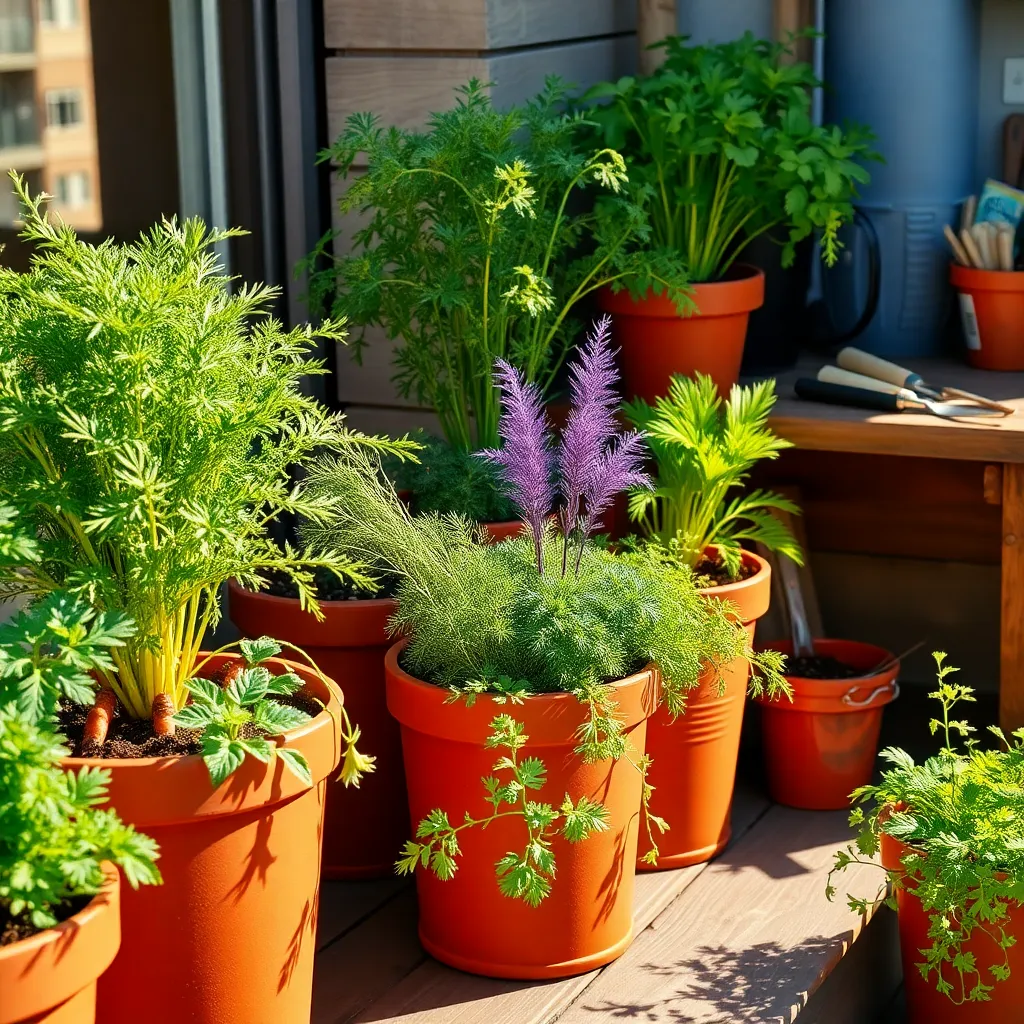
Choosing the right carrot variety is crucial when growing in containers. Shorter, round, or stump-rooted varieties are typically the best options for container gardening because they require less soil depth.
Consider varieties like ‘Paris Market’, ‘Thumbelina’, and ‘Chantenay’, which are specifically bred for shallow soil conditions. These types thrive in containers with a minimum depth of 10 to 12 inches.
For gardeners looking for a bit of variety, try planting a mix of colorful carrots such as ‘Cosmic Purple’ or ‘Atomic Red’. These not only add visual appeal but also offer different nutrient profiles and flavors.
Ensure your container has well-draining soil mixed with organic compost to provide essential nutrients. Carrots prefer loose, sandy soil to allow their roots to expand easily, so avoid compact, heavy soils.
Prepare Deep, Well-Draining Containers
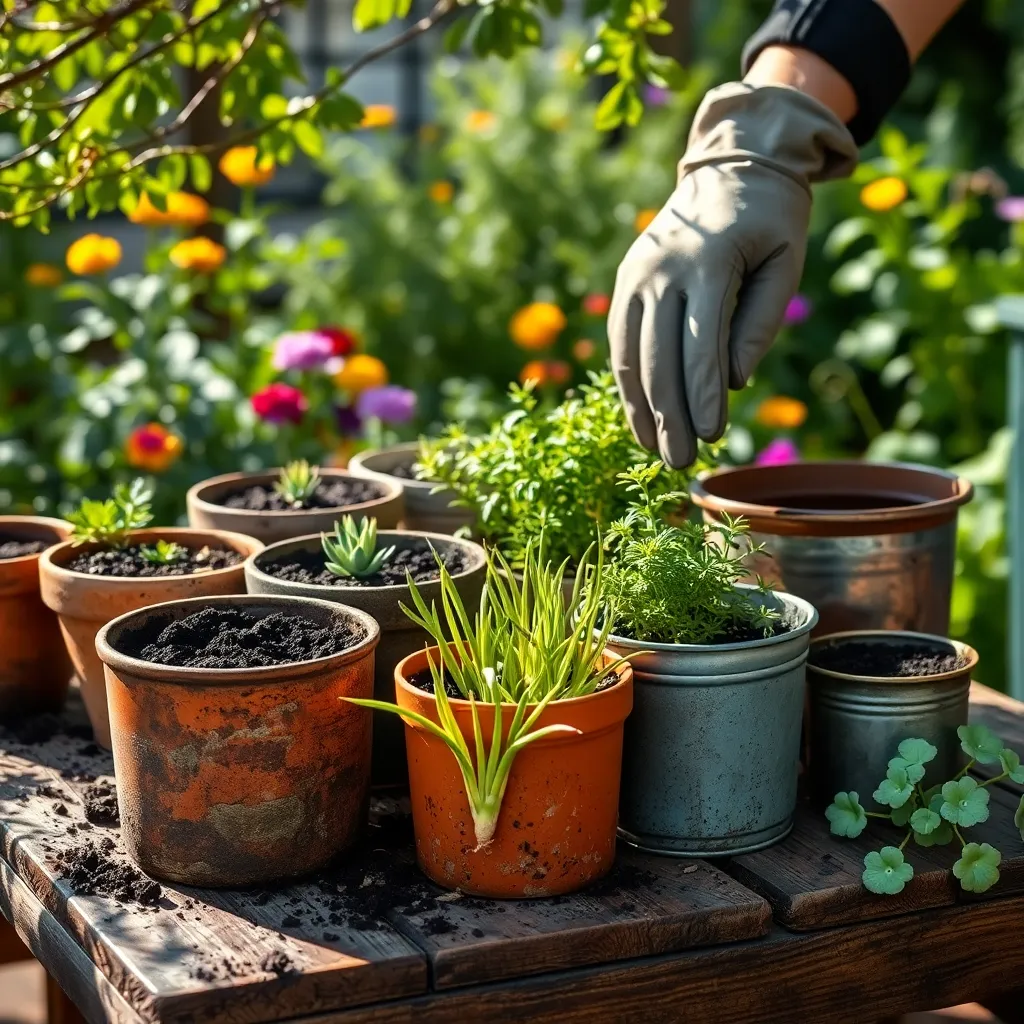
To grow carrots successfully in containers, it’s crucial to choose deep, well-draining pots. Ideally, select containers that are at least 12 inches deep to accommodate the carrot’s long root system.
Opt for containers made from materials like clay or plastic that have drainage holes at the bottom. If the containers do not have drainage holes, create them using a drill to prevent waterlogging, which can lead to root rot.
Fill your containers with a light, sandy loam soil that provides excellent drainage while retaining some moisture. A mix of potting soil with added sand or perlite works well for carrots, ensuring their roots can grow straight and without obstruction.
Water your carrots consistently, keeping the soil moist but not soggy, which can be achieved by watering deeply once a week. For more precise moisture control, consider using a drip irrigation system, especially if you’re growing a large number of containers.
Monitor your container-grown carrots closely for signs of overwatering or underwatering. While carrots require regular moisture, allowing the top inch of soil to dry out slightly between waterings can help prevent the development of fungal diseases.
Fill with Quality Potting Mix
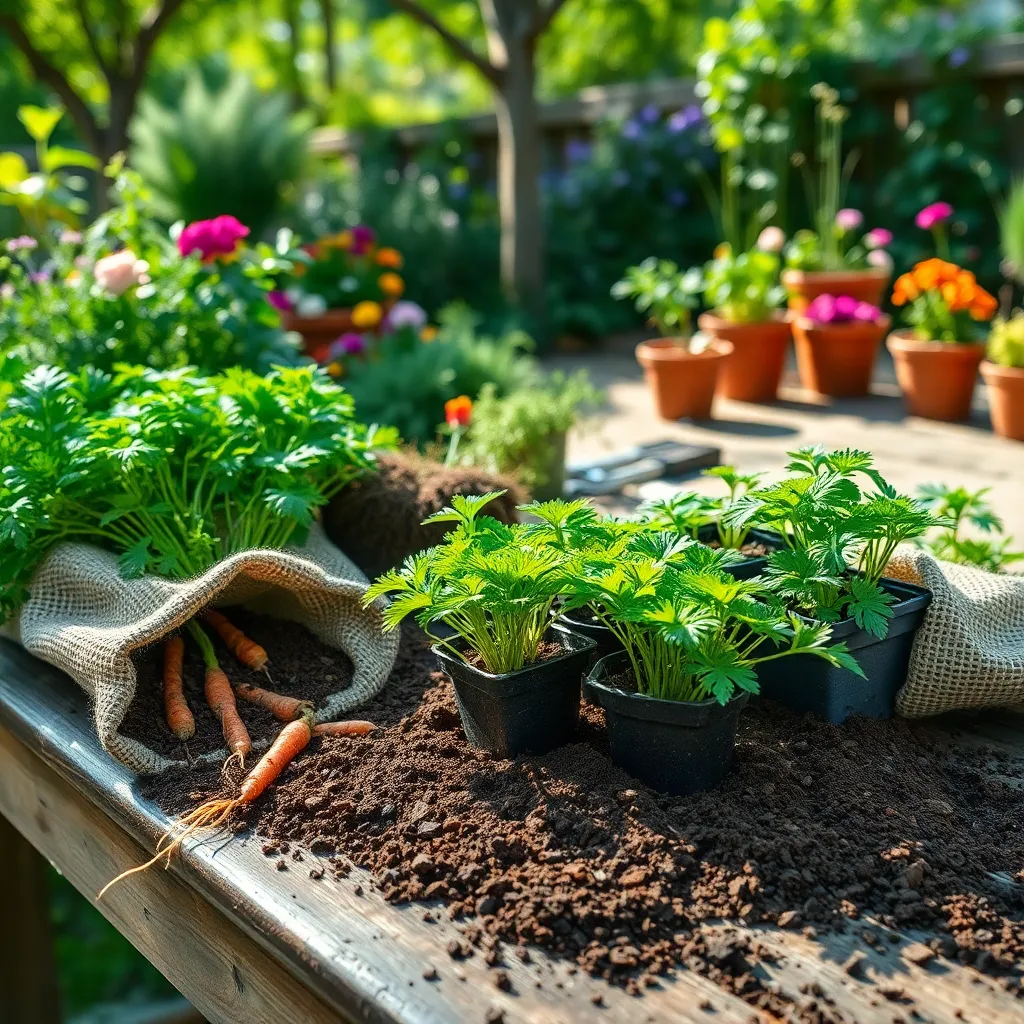
Choosing the right potting mix is crucial for growing carrots in containers. Opt for a lightweight, well-draining mix that is rich in organic matter to support healthy root development.
Look for a potting mix that contains ingredients like peat moss, vermiculite, or perlite, which help to aerate the soil and retain moisture. This combination ensures that the carrots receive the right balance of water and air, which is essential for their growth.
Before filling your container, consider adding a slow-release fertilizer to the potting mix. This provides a steady supply of nutrients to the carrots as they grow, which is especially beneficial if you’re using a standard commercial mix that might lack specific nutrients.
For advanced gardeners, mixing in some compost or aged manure can enhance the nutrient profile of your potting mix. However, be cautious not to over-fertilize, as excessive nutrients can lead to lush foliage at the expense of root development.
Sow Seeds at Correct Spacing
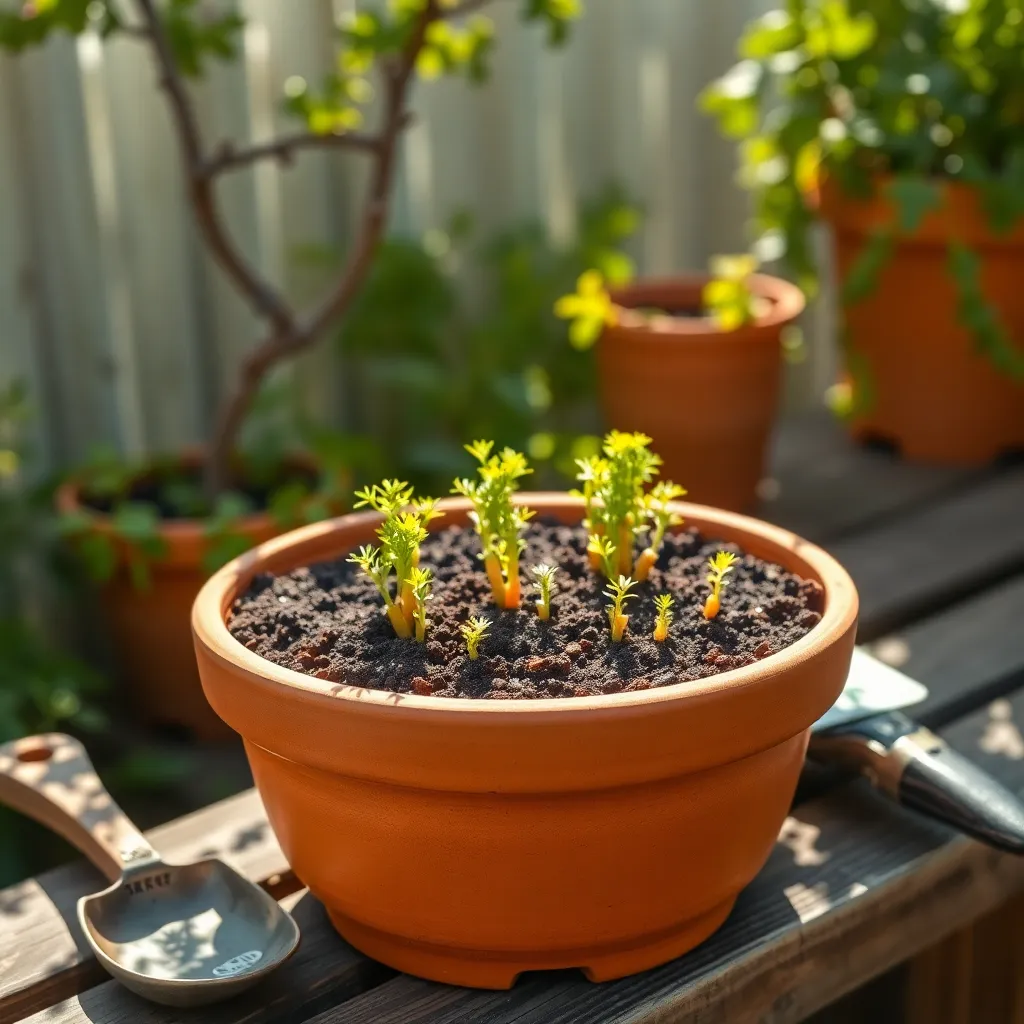
Planting carrot seeds at the correct spacing in your container is crucial for healthy growth and optimal yield. Begin by sowing the seeds approximately 1/4 inch deep and ensure they are spaced about 1 to 2 inches apart to allow each carrot ample room to mature.
To encourage even spacing, consider mixing the seeds with sand before sowing, which helps distribute them more evenly. Alternatively, you can use a seed tape, which is a practical tool for beginners to ensure proper spacing without much effort.
After sowing, gently cover the seeds with a thin layer of potting mix and water them lightly. It’s important to maintain consistent moisture in the soil; however, avoid overwatering as this can lead to root rot.
Advanced gardeners might opt to thin the seedlings once they reach about 2 inches in height, ensuring that the remaining plants are spaced correctly. Thinning helps prevent overcrowding, allowing each carrot to develop fully without competition for nutrients.
Water Consistently and Monitor Growth
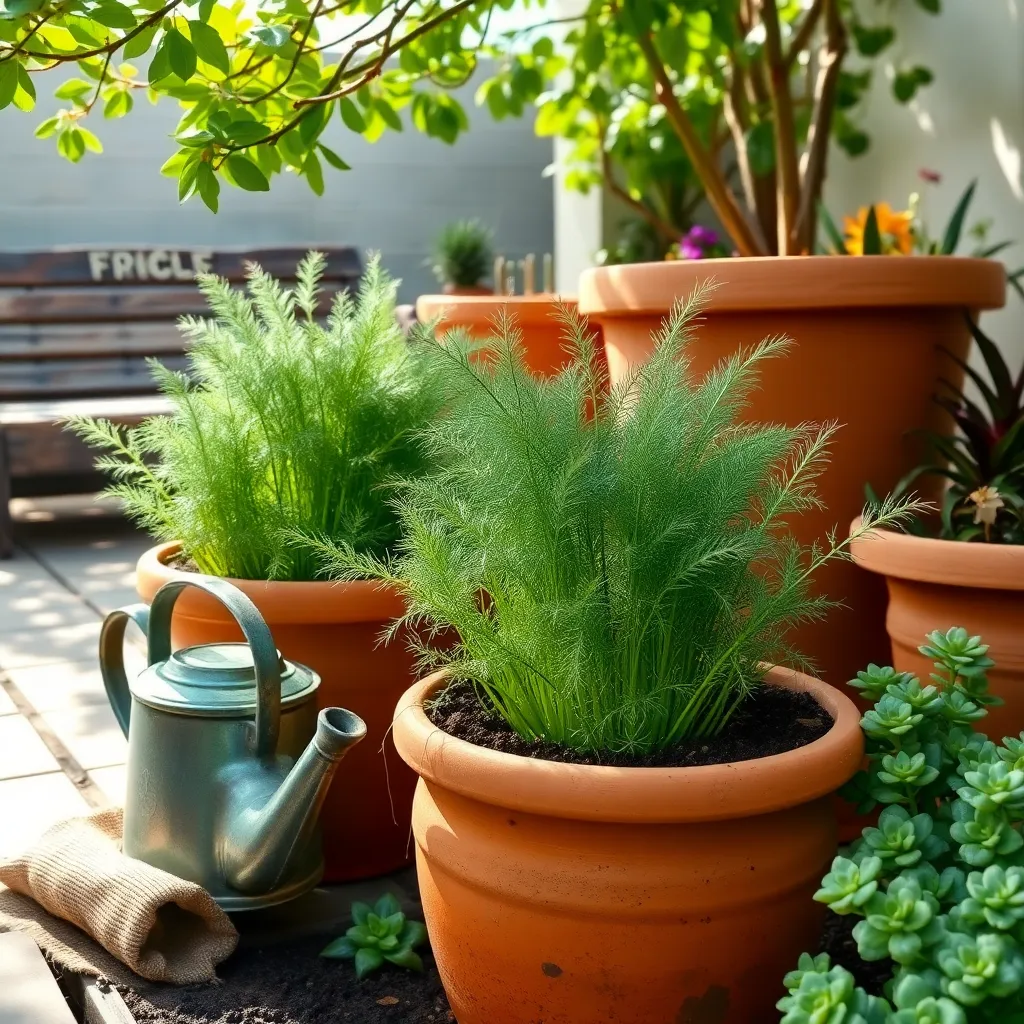
Consistent watering is crucial for growing healthy carrots in containers. Carrots require about one inch of water per week, which can come from rainfall or supplemental watering.
To ensure even moisture levels, consider using a self-watering container or adding a layer of mulch on top of the soil. Mulch helps retain moisture and keeps the soil temperature stable, which is beneficial for root development.
Monitor the growth of your carrots by checking their foliage and ensuring it remains green and vibrant. Yellowing leaves can indicate a need for more water or nutrients, so adjust your care routine as necessary.
For gardeners seeking to refine their skills, keeping a journal to track watering schedules and growth progress can be incredibly insightful. Regularly measuring the height of the foliage and noting any changes in the plant’s appearance can help identify issues before they become significant problems.
Conclusion: Growing Success with These Plants
In exploring the vibrant world of growing carrots in containers, we’ve uncovered five key relationship concepts that mirror the nurturing of any thriving partnership. First, we learned the importance of selecting the right “container,” or environment, which sets the stage for growth. Next, we delved into the necessity of “soil preparation,” akin to laying a solid foundation of trust and understanding. Thirdly, we emphasized “consistent watering,” comparable to regular communication, which keeps relationships flourishing. Fourth, “adequate sunlight” symbolizes the warmth and positivity needed to foster connection. Lastly, “thinning the seedlings” teaches us about the delicate art of giving each other space to grow independently.
Now, take a moment to identify one area where your relationship could use a little more nurturing and commit to making a small change today. Bookmark this article for easy access to these insights whenever you need a gentle reminder.
Remember, like any flourishing garden, a successful relationship requires ongoing attention and care. By applying these concepts, you’re setting the groundwork for a more resilient and rewarding partnership. Here’s to nurturing growth and reaping the rewards of your efforts. Keep nurturing, keep growing, and watch your relationships blossom beautifully. 🌱❤️
